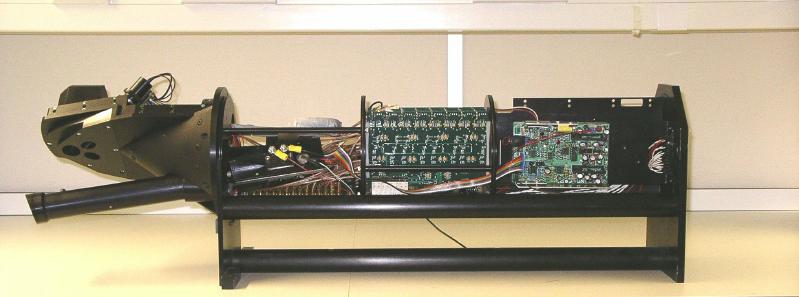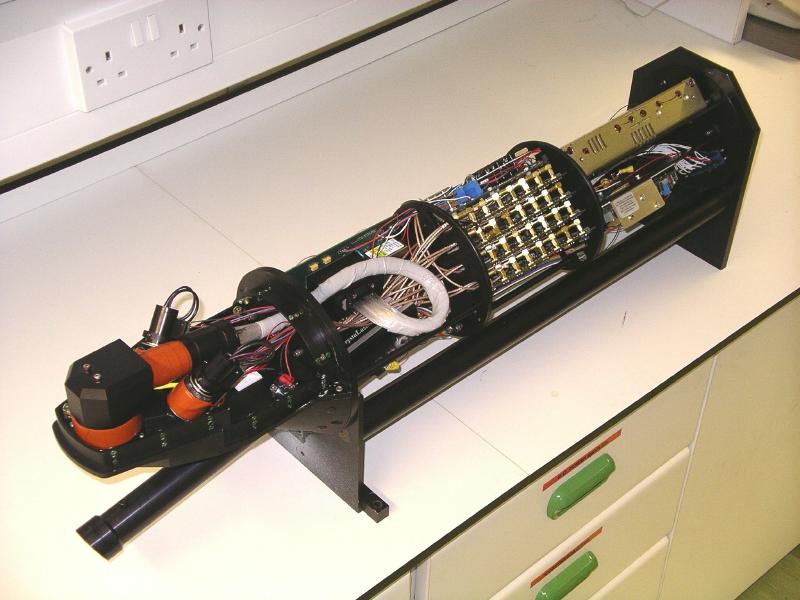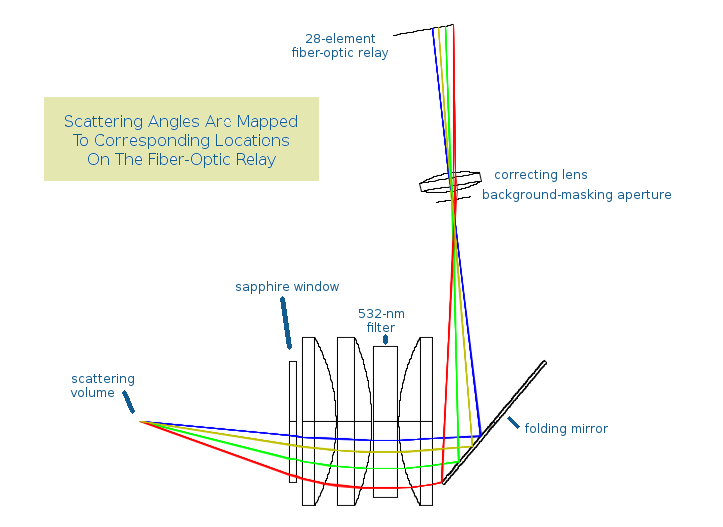Small Ice Detector, version 2 for HIAPER
Short Name or Variable Name
SID2H
- SID2H is a single-particle optical forward-scattering particle detection system. It measures the light that cloud particles scatter onto 28-segment photo-multiplier detectors. The sample area is defined by two separate, overlapping optical paths. The timing and 28 scattering amplitudes are recorded for each particle. Real-time software provides temporal estimates of the particle concentration (#/cc) and scattering amplitude. The particle size range is ~2 to 60 um diameter. Post-flight software is available for more detailed study of the properties of the hydrometeors.
, There is a detailed technical description of the instrument as build for the NSF/NCAR GV, referenced in the "Documentation" section at the end of this page. Briefly:
- Linearly polarized light from a 100 mW 532 nm Nd-YAG laser is converted to circular polarization by a quarter-wave plate, then is directed so that it passes orthogonal to the airflow through the sample volume. The beam is focused by a cylindrical lens so that one dimension is decreased to about 140 micrometers at the scattering volume, while the other dimension remains about 3 mm.
- Two "trigger" sensors detect light scattered at 45+/-9.3 degrees from the laser and focused to a PMT. These provide pulses that indicate when a particle is in the sample volume.
- The main optical system then distributes scattering angles to positions on the imaging plane so that those positions map to scattering from -20 to +20 degrees (except for the main beam that is removed by a dump spot on the first window). As shown in the diagram below, scattered light is mapped according to scattering angle onto a fiber-optic relay, and that relay then transfers the light to individual elements of a multi-anode PMT. The result is that 28 angular components of the scattered light are measured for each particle.
Primary External Contacts
Andy Heymsfield / Aaron Bamsemer
Lead Contact
Sarah Woods


